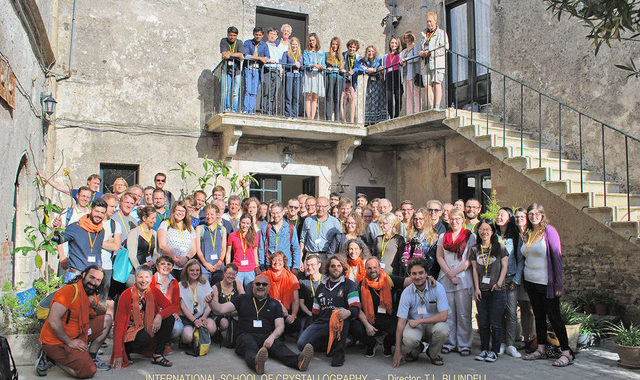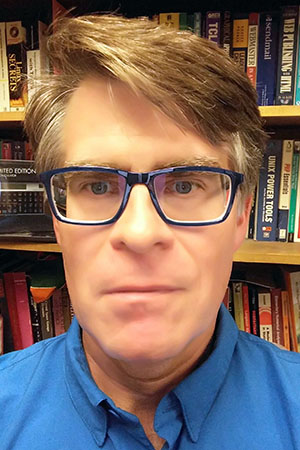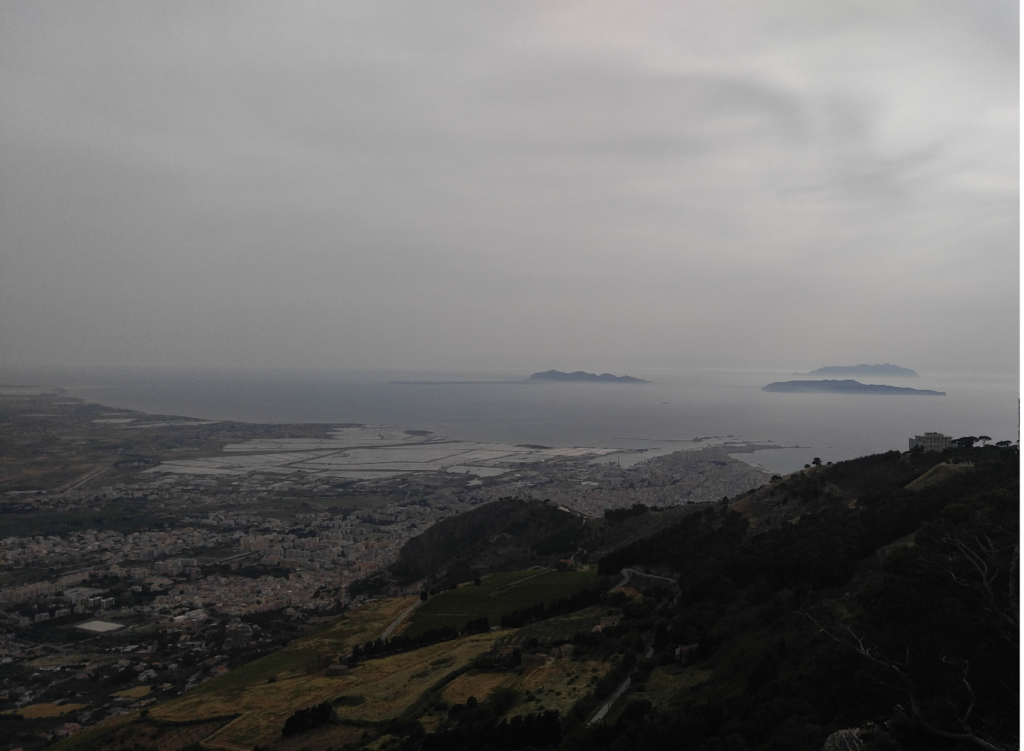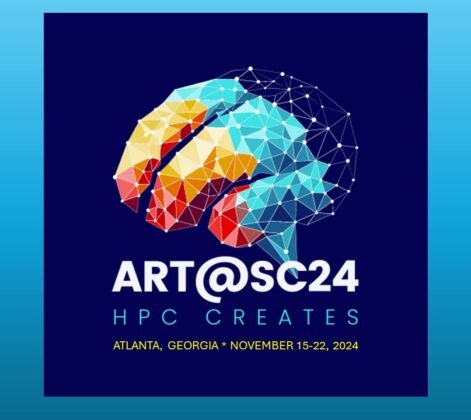In this blog, Marcus Bond, an XSEDE Campus Champion and professor of inorganic chemistry and x-ray crystallography at Southeast Missouri State University, shares his experience at the International School of Crystallography at the Ettore Majorana Foundation and Centre for Scientific Culture in the mountaintop village of Erice, Sicily, June 1-10.
This crystallography school has been held annually since 1974. Program themes change each year, and there is usually a single topic. However, this year two distinctly different themes were presented simultaneously: Electron Crystallography and Quantum Crystallography. While attendees of both met jointly for a few lectures, each held separate sessons and workshops. Everybody came together informally for meals, social events, excursions or just to stroll around the village.
Scattering methods, such as electron or X-ray diffraction, directly probe the arrangement of electron density in a crystalline solid, a quantity also determined quantum mechanically by the square modulus of the electron wave function. Thus, the two fields are complementary. But as stated at the outset of the school, crystallography is not just diffraction, and quantum is not just simulation; the field encompasses a broader range of topics related to properties of crystals (that might be studied spectroscopically), theoretical predication of crystalline forms and energetics, and interpretation of experimentally-derived electron density.
Lectures at the school covered a breadth of topics, including: fundamental crystallography, improving crystal structure refinement beyond the independent atom model, quantum calculations, crystalline properties and energetics, atomic force microscopy, and neutron diffraction. Attendees also participated in five half-day workshops, chosen from a menu of topics, to practice hands-on computational techniques. The five I participated in were: “Data treatment for single crystal X-ray diffraction,” “Hirshfeld atom refinement,” “Multipolar refinement of charge density with XD2016 and MoleCoolQT,” “Crystal Orbital Calculations with CRYSTAL2017,” and “Periodic DFT calculations with Quantum ESPRESSO.”
This was the first time Quantum Crystallography was offered as a topic at the school. In my opinion, it was quite successful, and I got the impression that a second school on the topic could be held again in a few years. This was the second time I have attended this school, the first being in 2007 when the topic was “Engineering of Crystalline Materials Properties.” That was a seminal event in my career that led to several publications, including two feature cover articles. Since attending the first school, our science building was closed for remodeling for a two-year period and all research ground to a halt. Restarting these programs has been a gradual process over the past few years. During this time, I also obtained our cluster, since I was prompted by a desire to start doing quantum calculations and move into quantum crystallography. So this workshop was timely, both in terms of moving into a new area of research, and in reinvigorating my research program after a forced hiatus. Since my interest in quantum crystallography led to my interest in HPC, the school was the perfect precursur to the International Supercomputing Conference, ISC High Performance 2018 the following week in Frankfurt. #ISC18.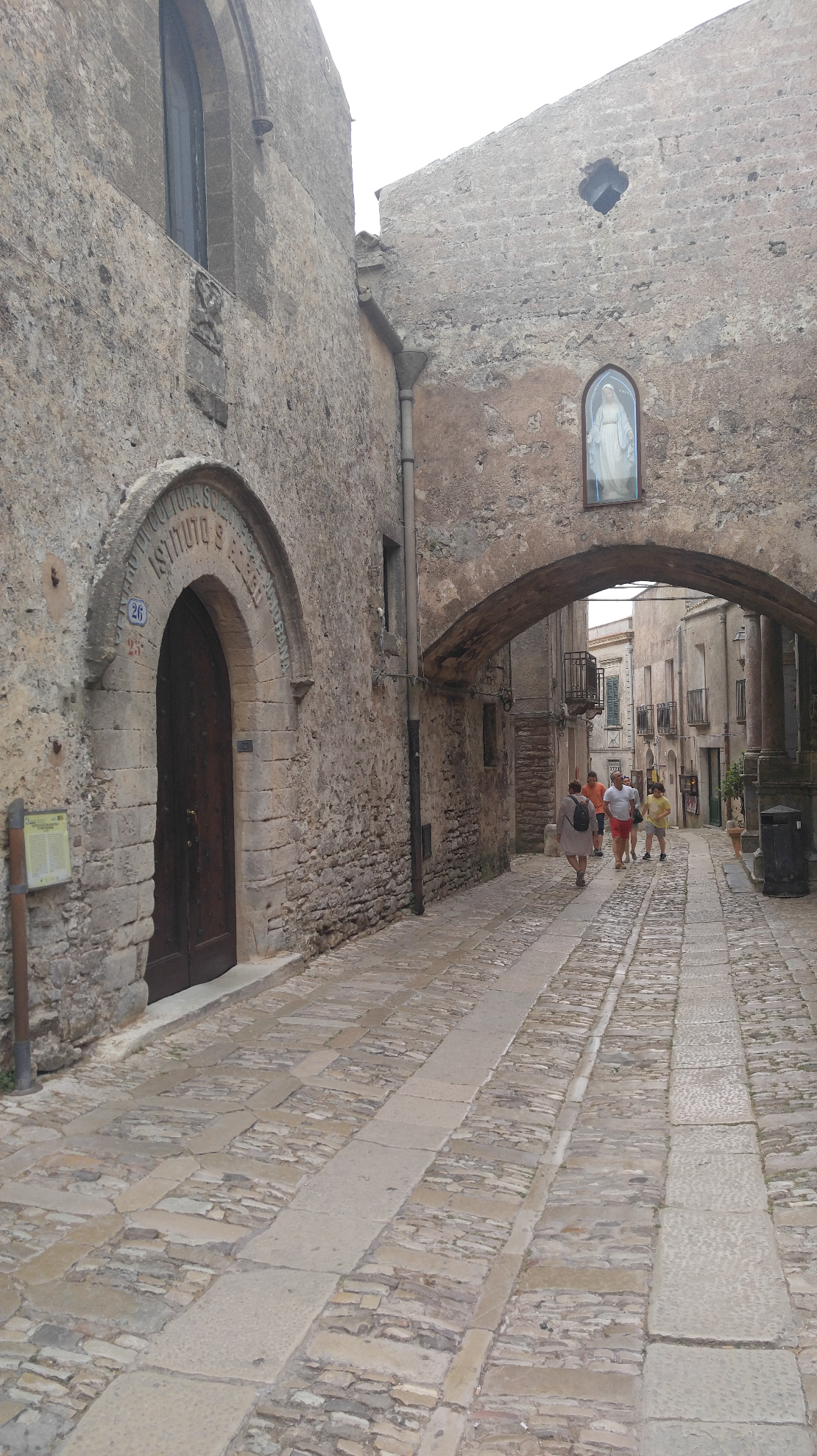 Outside the doors to the San Rocco building that serves as headquarters for the Ettore Majorana Centre.
Outside the doors to the San Rocco building that serves as headquarters for the Ettore Majorana Centre.
__________________
Exploring northwest Sicily
The mountain village of Erice lies above the port city if Trapani, positioned in the northwest corner of Sicily on a crescent shape spit of land that curves northward into the Tyrrhenian Sea. Recreational beaches dot the north shore, while the major shipping port is on the south, and features daily ferries to several nearby island destinations.
Facing the port is the statue of Giuseppe Garibaldi, one of the fathers of unified Italy, who led the 1860 “Expedition of the Thousand,” on their quest to conquer the two Sicilies ruled by the House of Bourbon.
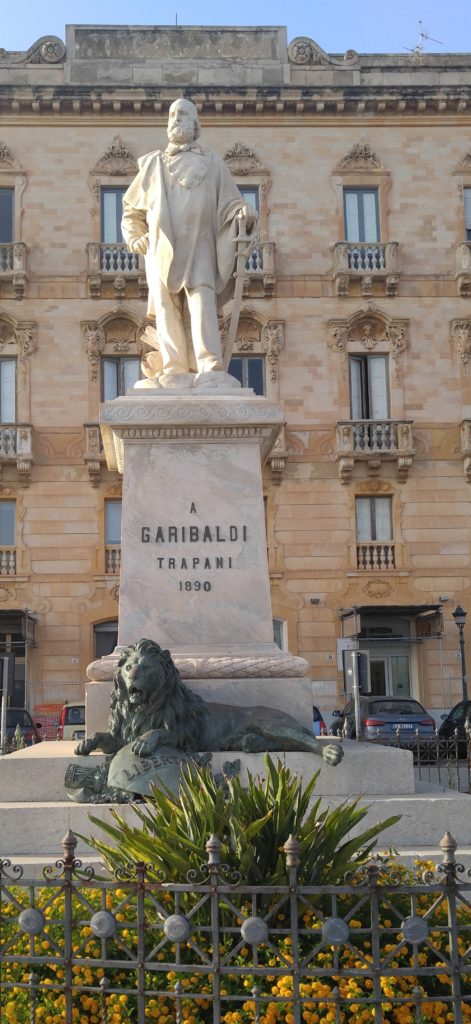 The view of Trapani from the south side of Erice shows the crescent shape of the city with historic (and still in use) salt pans to the south and the Egadi Islands, Favignana foremost left, followed by Levanzo foremost right, and Marretimo in the back (photo below).
The view of Trapani from the south side of Erice shows the crescent shape of the city with historic (and still in use) salt pans to the south and the Egadi Islands, Favignana foremost left, followed by Levanzo foremost right, and Marretimo in the back (photo below).
While the islands seem quite mountainous, the south end of Favignana is flat as a pancake and barely above sea level. It is the most populous island with a small town in the flats. As a result, is a popular day trip destination where you can catch a hydrofoil from Trapani, then spend the day biking Favignana on a rental bike from one of the many vendors that litter the downtown area. (Picture of Favignana town square with bicycles, below).
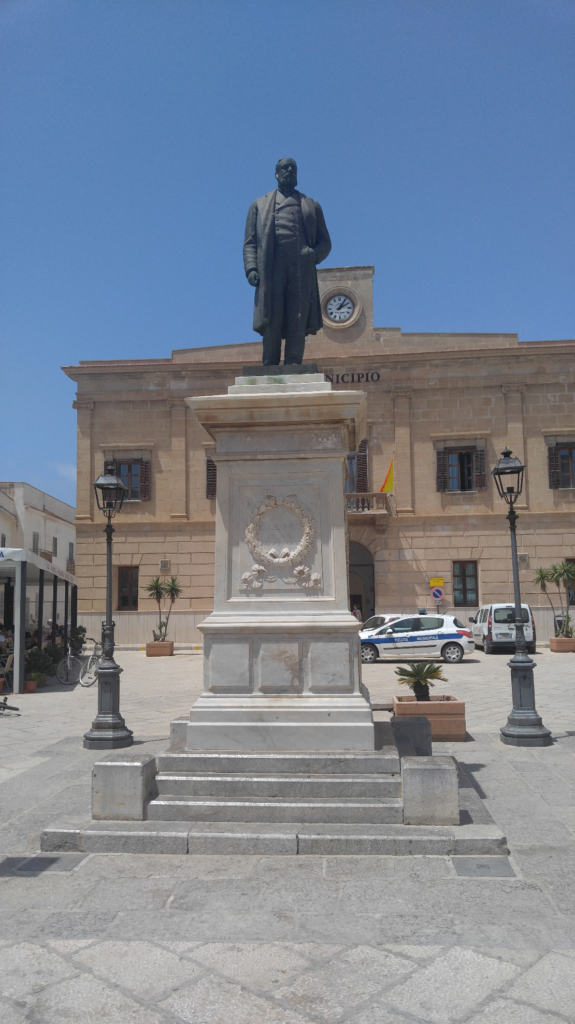 The salt pans are an essential part of Trapani history and culture. The windmills shown here in a view across the salt pans are a common decoration on souvenirs from Trapani. Salt was first harvested here by Phoenicians starting ca. 2500 years ago.
The salt pans are an essential part of Trapani history and culture. The windmills shown here in a view across the salt pans are a common decoration on souvenirs from Trapani. Salt was first harvested here by Phoenicians starting ca. 2500 years ago.
The harvested salt is stacked in mounds and protected by terra cotta tiles. The mountain of Erice is in the background (photo below).
_______________________
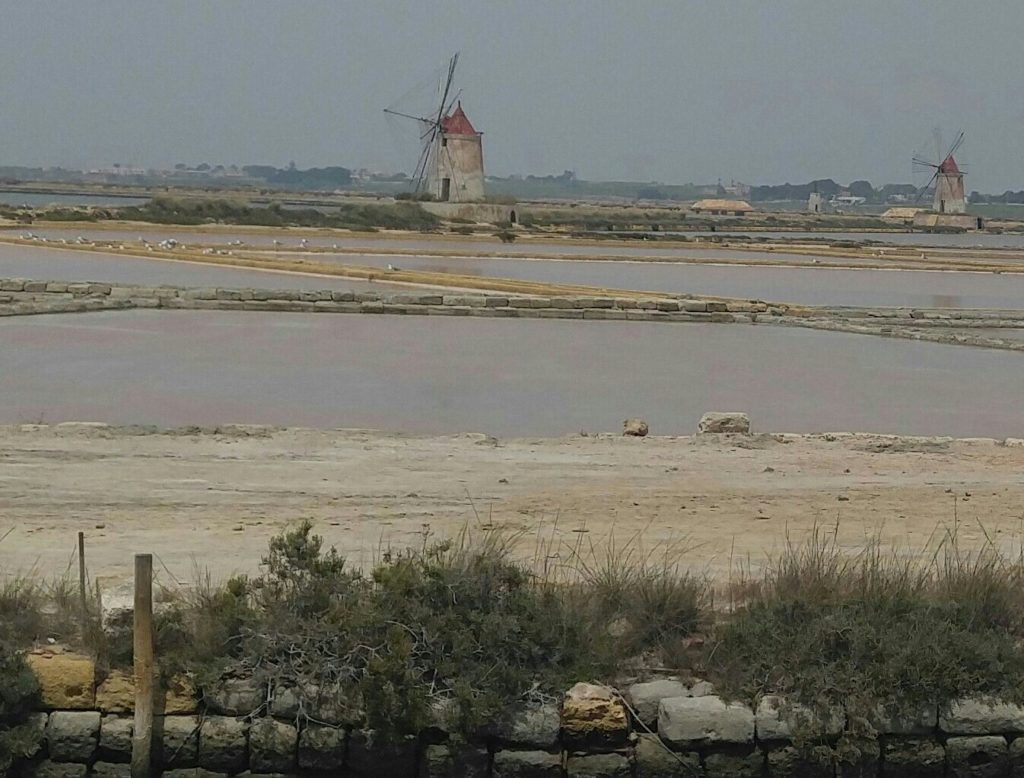
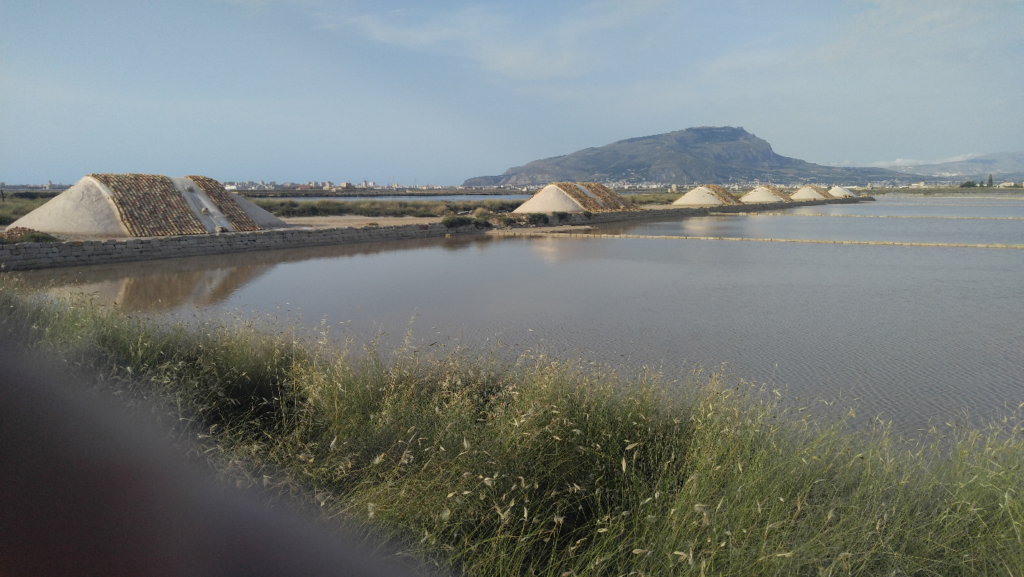 Featured group photo copyright International School of Crystallography Additional photos were provided by Marcus Bond.
Featured group photo copyright International School of Crystallography Additional photos were provided by Marcus Bond.

